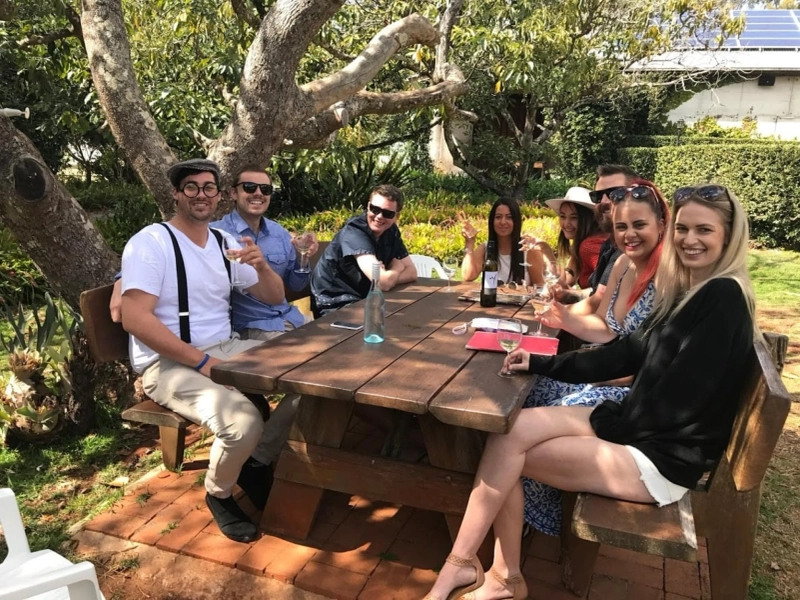Everyone loves a good winery tour, and there's something for everyone in the winemaking process. Producing wine is no small feat: wineries go through many steps in order to ensure that their product will be of high quality and taste great.
Winery tours can vary greatly depending on the type of winery, but most offer tastings to guests and an educational experience. On a tour, you may hear about how the grapes are grown or harvested, which varieties are available at that time, what they taste like, and why they're different from others. You'll also get to sample some wines as well! There is so much history and science involved in winemaking that it's easy to lose track of time while being talked through each. If you are planning to take a winery tour near you or this is the first time you will do this, This article will help you know what to expect on the tour. But let's talk first about what a winery tour is.
Winery Tour: What is it?
Winery tours are a way to educate consumers on the wine-making process while at the same time encouraging them to purchase the product. Winery tours can be fun, but they are also a serious business. The best tours will guide you thru the winemaking process and reveal interesting tidbits about the history of wine-making. A tour should also include a tasting so that visitors can sample what they have learned during the tour.
Winery tours seem like an easy thing to do, but they are actually a big business. Most wine enthusiasts who want to visit wineries need some help booking a tour and finding the perfect one for them. These tours can cost hundreds of dollars, which is why I’m creating this guide on how to find winery tours for cheap. I will include tips that you can use to get the best deals for your time and money. I will also show you the benefits of booking these tours because you get more bang for your buck.
Winery Tour: What to expect?
Winery tours are a great way to explore the city, if you are new to the area and sample some of the best wines. There are so many different things to do at a winery, but you may not know about all the fun activities that may be offered. There are several different types of wine tastings that you can participate in, including:
General Tours: These are a great way to learn about the history of the winery, how wine is made, and what makes this winery unique.
Specialty Tastings: You can also enjoy a specialty tasting where they will take you in depth on the different types of wines they have, or teach you how to pair wine with food.
The tour usually lasts for about 2-4 hours and includes a short presentation on the history of winemaking and wine consumption, followed by a tour of the winery and a tasting session. The tours are usually conducted in groups of 10–15 people by a trained tour guide, who will help you learn about the different types of wines, their characteristics, and also how to pair them with dishes. The tour usually ends with a gala dinner or lunch.
The Different Stages of Winemaking
The process of turning grapes into wine is known as winemaking. The natural chemical processes that transform grape juice into wine take place in the absence of oxygen or any other biological agent. Yeast transforms sugar into alcohol, carbon dioxide, and heat (energy). The yeast's food source is called "fermentable sugars." These include glucose and fructose, which are found in abundance in fruit. But there are also complex carbohydrates (such as raffinose) which can only be broken down by enzymes produced by the yeast. The following are the basic steps in the winemaking process:
Harvesting: The first stage in making wine is harvesting, or picking, the grapes because, without fruit, there would be no real product. As a result, most winemakers agree that "wine" begins with grapevines symbolically rather than literally, as if to say "bread" (which actually comes from another plant). Harvesting must occur at nearly perfect timing, ideally when your grapes are biologically capable of producing enough sugar both year-round and during their brief growth season here on Earth.
Pressing: The next step in the winemaking process is customarily to crush complete clusters of fresh, ripe grapes. The time-honored tradition of stomping or trodding the grapes into what is generally referred to as "must" is now carried out by machine crushers. It's worth noting that not all wine starts off in a crusher. Winemakers may choose to allow fermentation to begin inside uncrushed whole grape clusters before pressing them, enabling the natural weight of the grapes and the commencement of fermentation to rupture the grapes' skins. The methods for creating white and red wines are generally the same until crushing and pressing.
Fermentation: It's a beautiful thing when the wine is allowed to express its natural flavors without being manipulated by man. Fermentation does play an important role in making this divine beverage, but only if left up to wild yeast will it begin converting sugars into ferments naturally within six or twelve hours, giving enough time for the conversion process (which can take weeks). In well-established vineyards where there isn't any unwanted chemical residue around (such as pesticides), these little spontaneous binges are welcomed occurrences!
Clarification: The clarification process begins once the fermentation has finished. Winemakers can rack or siphon their wines from one tank or barrel to another in the hopes of leaving the pomace (precipitates and sediments) at the bottom of the fermenting tank. Filtering and fining are also possible at this point. Filtration can be accomplished using a variety of methods, ranging from a coarse filter that captures just big particulates to a sterile filter pad that removes all life from the wine. Fining is the process of adding chemicals to a wine in order to clarify it.
Bottling and Aging Process: Following clarification, the winemaker has the option of bottling the wine right away or maturing it in bottles, stainless steel or ceramic tanks, huge wooden ovals, or small barrels known as barriques. The options and strategies available in this final stage of the procedure, as well as the end results, are practically limitless. In every case, tho, the end outcome is wine.
Winemaking is a fascinating subject that can take you thru a variety of processes. To summarize the process of winemaking, the first step is harvesting. It is important to pick the grapes at the right time for the best quality wine. After harvesting, the grapes are taken to the winery and sorted. The next step is crushing. The crushed grapes are left to ferment for a period of time. When fermentation is complete, the wine is taken to the press to extract juice. The wine must then be clarified. The wine is filtered and clarified before packaging.
If you want to learn more about what happens during a winery tour, if you're looking for a fun activity to do this weekend, or even if you’re just curious about the process, we encourage you to consider searching for a winery tour near you. They can give you some insight into how the tours work and what is involved. With so many wineries in the area, you'll have no trouble finding one that suits your tastes and interests.



